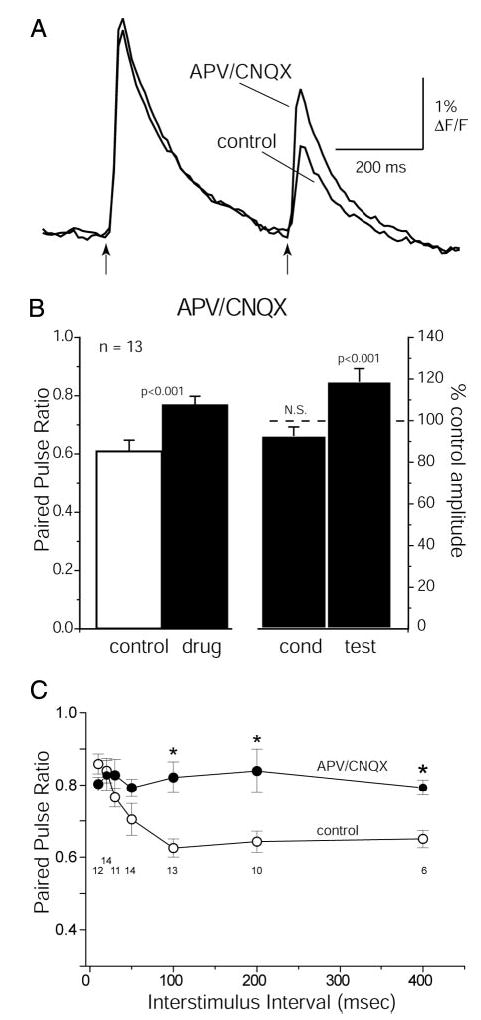FIG. 3.

Blocking postsynaptic activity with APV/CNQX reduces paired-pulse depression. A: CGD signals evoked by paired ON shocks (400-ms ISI) before and during application of APV/CNQX (100 μM/20 μM). Traces are filtered from 0.8 to 25 Hz. APV/CNQX strongly reduces paired-pulse depression. B: summary data showing effect of APV/CNQX on paired-pulse ratio (PPR) of the CGD signal and on conditioning and test response amplitudes. Left bars show PPR measured before and during drug application. Right bars show conditioning and test responses relative to their amplitudes before drug application (- - -). Paired pulses were delivered at 400- to 500-ms ISIs. There was a significant increase in the PPR and test response, with no change in the conditioning response. C: effect of APV/CNQX is independent of ISI. ○, PPR as a function of ISI at short intervals measured with low-affinity rhod dextran (same data as in Fig. 2C); •, PPR in the presence of APV/CNQX. *, significant differences between drug and control recordings (P < 0.05; 2-tailed, unpaired t-test). Numbers indicate number of glomeruli tested in control conditions for each interval.
